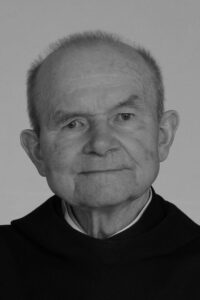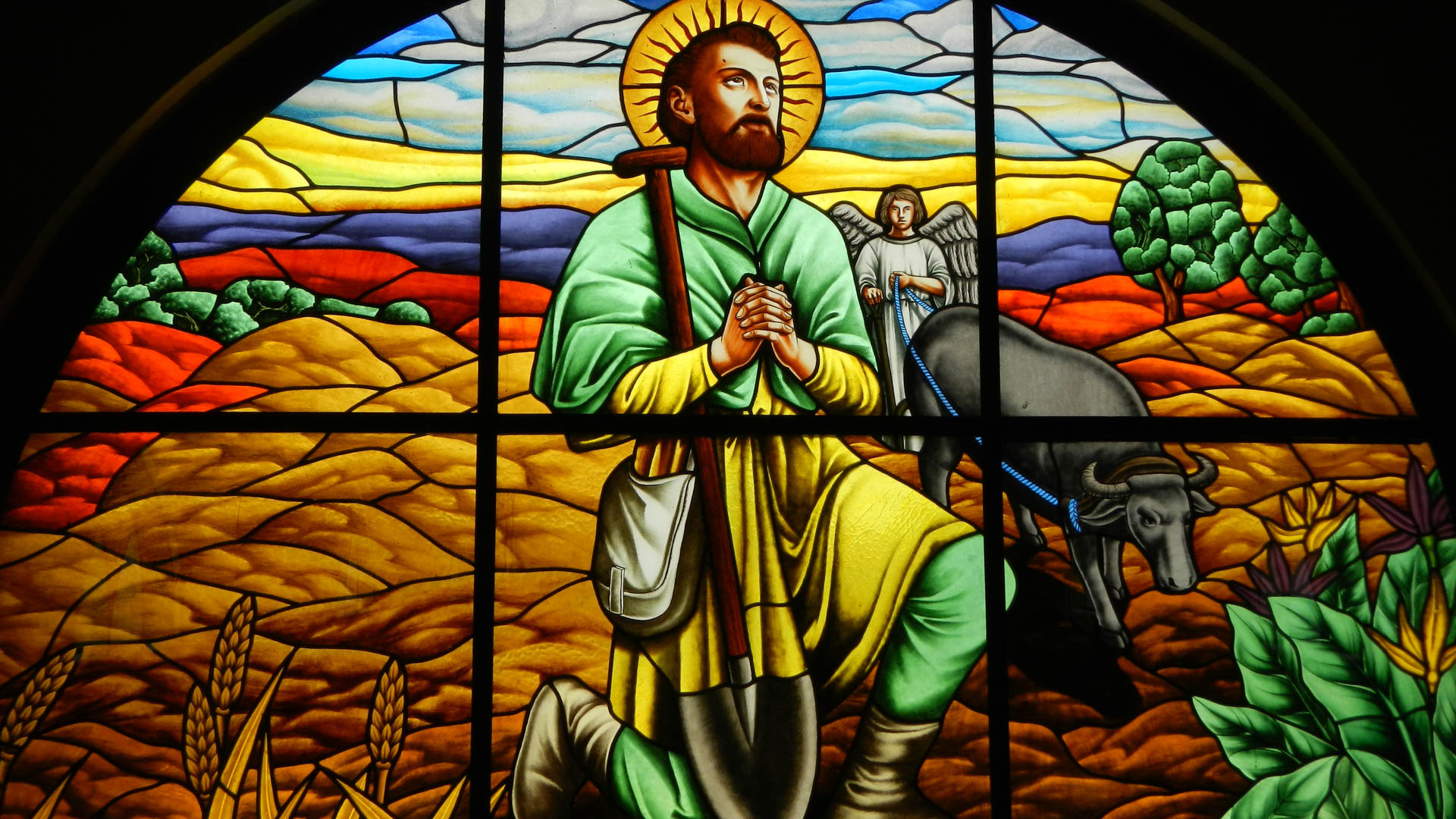Photo : Saint Isidore the Farmer Church in San Isidro, Nueva Ecija, cropped | By By Judgefloro – Own work, Public Domain
We have taken artistic liberties in using this image: Our Brother Isidore took his name from the Spanish monk and archbishop Isidore of Seville.
 Brother Isidor (Georg) Mayer OSB
Brother Isidor (Georg) Mayer OSB
Missionary Benedictine of Sankt Ottilien
23 March 1931 – 19 June 2022
Reconciled with himself and God, Brother Isidor Mayer made his last journey on Sunday morning, 19 June 2022. He was in the 92nd year of his life and the 66th of his monastic profession. His strength noticeably diminished in the last two weeks, so that the indefatigable monk was given over to the loving care of the infirmary until he met his Savior. He was clearly conscious as he took leave of the confreres and his environment.
Brother Isidor came into the world on 23 March 1931 in the Lower Bavarian hamlet of Umbertshausen, Kelheim District, Diocese of Regensburg and was baptized with the name of his father. Four other children were granted to his parents Georg and Katharina, née Gschlössl. Hard work was the hallmark of daily life on the small farm. Georg attended primary school in nearby Münchsmünster from 1937 to 1945 and then the continuation and vocational school until 1947. The final report of the school characterizes him as “quiet, decent, and hardworking.” Courses in the agricultural and winter school at Weltenburg Abbey followed from 1949 to 1951. His entrance into the monastery of St. Ottilien took place on 29 November 1954. In his application for admission, he wrote that he had felt called to the Order for some time and had become aware of St. Ottilien through a newspaper article. At his admission to the novitiate on 16 September 1955, he was named after the Spanish monk and archbishop Isidore of Seville. His temporary profession was on 17 September 1956 and his perpetual profession on 4 October 1959.
Immediately after his entry into the Archabbey, Brother Isidor began his work on the extensive monastery farm and passed the examination for pig breeding assistant in 1957. Shortly after perpetual profession, he was sent to the monastery farm at Wessobrunn about 40 kilometers away. In addition to the cow barn with its well-known cheese production, there was also about 150 hectares of fields, meadows and forest that had to be managed. After the sudden accidental death of Brother Cajetan Wimmer in 1963, Br. Isidor was promoted to head of the farm. He caught up on the necessary final exams in the following years: In 1964 he passed the agricultural assistant exam and in 1965 the master’s exam in Weilheim. He performed excellently in all his exams. In addition to his managing the monastery farm, he built up the pig breeding operation and took over the forestry work. He was a friendly but also exacting instructor for over three decades for the many agricultural apprentices (usually four per year) and is still fondly remembered by many. During this time, he was also elected for two terms to the local Wessobrunn council.
Even though the small community of monks in Wessobrunn worked and accomplished an enormous amount, their numbers decreased increasingly over the years. At the end of 1995, they asked in an open letter to “return” to the motherhouse of St. Ottilien. This was approved after thorough consultation. Even though he had already reached retirement age, he continued to help where help was needed, for example with the fruit harvest or forestry work. One of his main tasks was to work in the apiary, where he got along very well with the head “Doc” Schmidt. Later he took over the pig breeding again, where you could see him in rubber boots pushing a heavily loaded bicycle every day. When breeding pigs was stopped, he probably had a more relaxed daily workload for the first time in his life. Nevertheless, he continued to place his remaining strength at the disposal of the monastic community. He emptied the wastebaskets around the monastery and again reworked his bike accordingly. Above all, however, he was a tireless and diligent man of prayer and a great friend of Mary. Thus, in addition to the prayer in choir, he liked to take part in praying the rosary that he organized in the lower church. His great concern in the last days of his life was that the rosary continue to be prayed in the monastery.
In daily interactions he was fraternal, cordial, modest and content with everything. As his areas of responsibility showed, he took on precisely those activities for which there were few volunteers. He possessed a strong personal charisma, combining strength of character and deep piety. Since he had a lot of common sense and clear judgment, he was often asked for advice and it was gladly sought after.
Thanks to a strong constitution, he was able to remain active until very old age and was one of the confreres who could always be relied on. Above all, he was noticeably imbued with the spirit of prayer and a deep heartfelt piety. So we hope and pray that he will now be able to see his Savior face to face.


